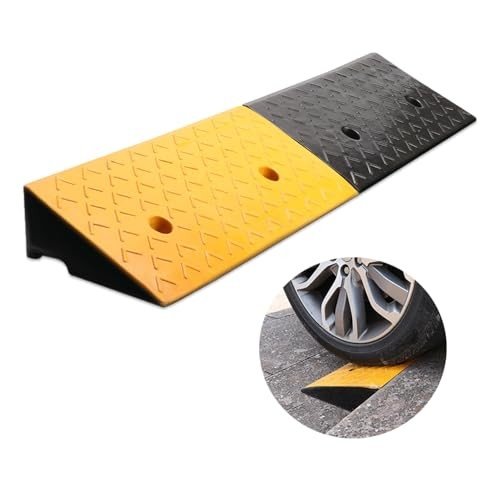The Complete List Of Portable Ramps Dos And Don’ts
Portable Ramps: A Comprehensive Guide
In today’s world, ease of access is a fundamental right, enabling people with mobility obstacles to navigate their environments with ease. Portable ramps play a crucial role in this accessibility, acting as adaptable options for both temporary and irreversible usage. Whether for wheelchair users or people with strollers, portable ramps offer versatility and convenience. This blog post digs into the numerous aspects of portable ramps, consisting of types, features, benefits, and setup ideas.
What is a Portable Ramp?
A portable ramp is a mobility aid created to assist individuals in conquering obstacles such as stairs or curbs. These ramps are lightweight, foldable, and easy to transfer, making them a perfect choice for both indoor and outside use. They can be constructed from numerous products, consisting of aluminum, rubber, and wood, each offering distinct benefits.

Table 1: Types of Portable Ramps
| Type | Description | Common Uses |
|---|---|---|
| Wheelchair Ramps | Developed specifically for wheelchair access. | Home entryways, cars |
| Threshold Ramps | Brief ramps for doors or small steps. | Doorways, limits |
| Folding Ramps | Ramps that fold for easy storage and transportation. | Temporary usage in public areas |
| Roll Up Ramps | Flexible ramps that can be rolled up for transport. | Events, outside activities |
| Bi-fold Ramps | Ramps that fold in half for easy handling. | Action access, automobiles |
Advantages of Using Portable Ramps
1. Improved Accessibility
Portable ramps supply individuals with mobility challenges the ability to access different environments without support. They help get rid of barriers and promote independence.
2. Versatility
These ramps can be utilized in a variety of areas, making them adaptable for personal use. They can accommodate wheelchairs, scooters, and walkers in varied settings, including homes, workplaces, and public spaces.
3. Easy Installation
The majority of portable ramps require minimal assembly and can be rapidly deployed. This ease of setup makes them perfect for temporary scenarios, such as outside occasions or taking a trip.
4. Lightweight and Sturdy
Constructed from lightweight products like aluminum, portable ramps are simple to bring without jeopardizing resilience. They can support substantial weight, guaranteeing safety for users.
5. Cost-efficient Solution
Purchasing a portable ramp is frequently more cost-effective than making long-term structural modifications, such as setting up a fixed ramp or elevator.
6. Transport-Friendly
The majority of portable ramps are foldable or collapsible, making them hassle-free for transport in automobiles. Their style enables simple storage when not in use.
Table 2: Features to Look for in Portable Ramps
| Feature | Value |
|---|---|
| Weight Capacity | Ensure it can support designated use. |
| Product | Resilience and weather condition resistance. |
| Surface Texture | Avoid slip and boost traction. |
| Length and Gradient | For safe access depending on height. |
| Portability | Lightweight or foldable for simple transportation. |
Factors to consider When Choosing a Portable Ramp
When choosing a portable ramp, it is important to consider numerous aspects to guarantee it fulfills the user’s requirements:
1. Weight Capacity
Always check the weight capability of the ramp to guarantee that it can accommodate the user and their equipment comfortably.
2. Gradient and Length
Ramps should have a progressive slope for safe use. As a guideline of thumb, a 1:12 slope (one inch of height for every 12 inches of ramp) is often suggested.
3. Mobility Equipment Compatibility
Make sure the ramp’s measurements are appropriate for the particular mobility device being utilized, whether it be a wheelchair, walker, or scooter.
4. Surface Texture
The ramp’s surface should supply adequate traction to avoid slipping, specifically in damp or outdoor conditions.
5. Material Durability
Select ramps made from robust materials that can hold up against environmental components, particularly for outdoor usage.
6. Mobility
Think about whether the ramp is simple to transportation and store, especially if you prepare to take it on the go.
Installation and Usage Tips
1. Examine the Environment
Before installation, assess the area where the ramp will be used. Search for steady surface areas free of particles or obstacles.
2. Level the Ramp
Guarantee the ramp is level; this will enhance security and facilitate smooth access for users.
3. Secure the Ramp
If possible, secure the ramp in location to avoid movement throughout usage. Lots of ramps included non-slip bases for added stability.
4. Test the Ramp
Before complete usage, test the ramp with a progressive ascent and a consistent weight to evaluate its efficiency.
5. Routine Maintenance
Check ramps routinely for wear and tear, especially at the hinges, folding mechanisms, and surfaces. Tidy the ramp regularly to maintain its condition.
Often Asked Questions (FAQs)
Q1: Are portable ramps suitable for outdoor usage?
Yes, lots of portable ramps are developed for outside usage, but it’s vital to examine the material for weather resistance and resilience.
Q2: How do I identify the right length of a portable ramp?
Follow the 1:12 slope rule: for every inch of height, you need a foot of ramp length. Procedure the height of the step or curb, and calculate the ramp length accordingly.
Q3: Can portable ramps be utilized for lorries?
Yes, specially designed portable ramps are readily available for vehicle access, enabling wheelchair users to get in and leave their automobiles safely.
Q4: How much do portable ramps normally cost?
Expense can vary substantially based upon size, product, and functions. Basic models begin around ₤ 100, while sturdy ramps can range from ₤ 500 to over ₤ 1000.
Q5: Are there weight limits for portable ramps?
Yes, each ramp has actually a specified weight limit. Make certain to examine the manufacturer’s guidelines to make sure security.
Portable ramps are invaluable tools that significantly improve ease of access for people with my mobility scooters obstacles. By comprehending the different types, benefits, and considerations for portable ramps, users can make educated choices to improve their day-to-day lives. Whether for temporary use at events or a long-term solution to navigate home steps, portable ramps supply the needed support and self-reliance to many people. As society continues to focus on inclusivity, portable ramps will stay important in breaking down physical barriers.




